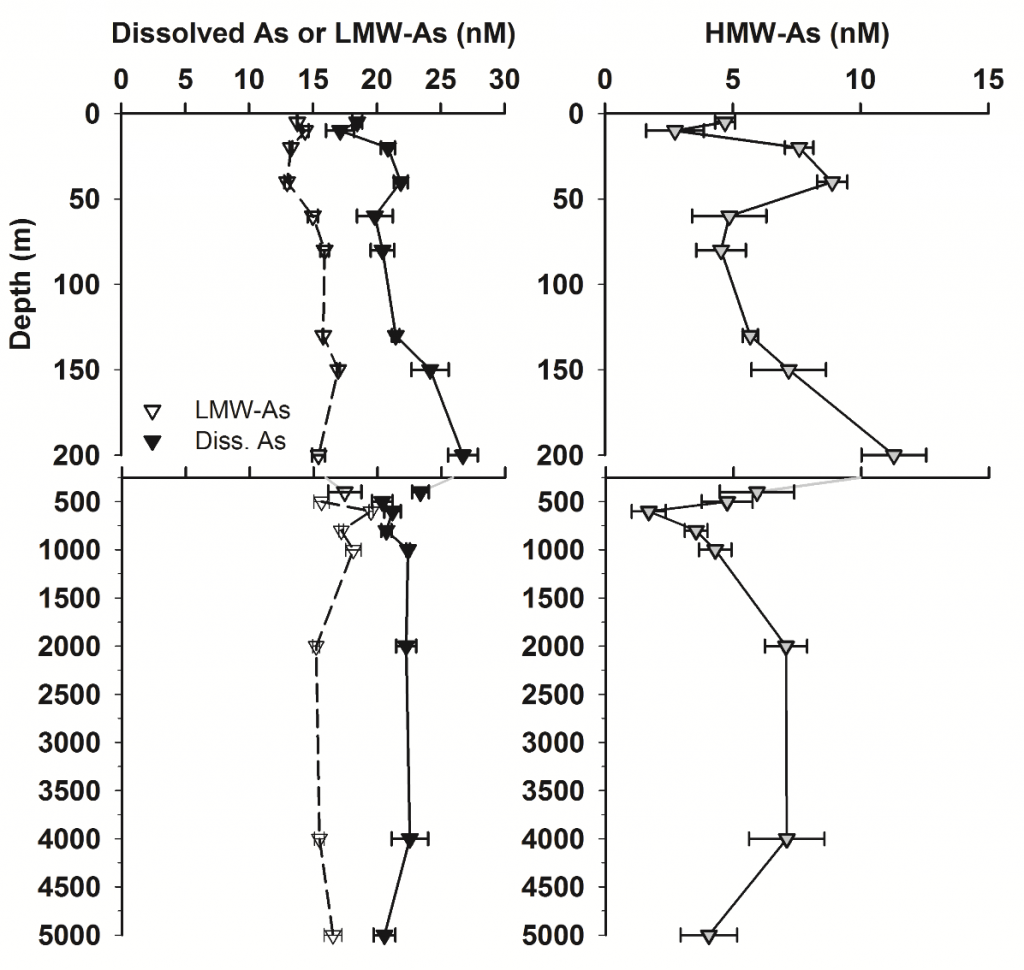Dissolved and Colloidal Arsenic in the Western Philippine Sea
Arsenic (As) is an environmental toxicant and a major global concern in the world ocean. There are different chemical species for this element (arsenate, arsenite and methylated arsenic) in aquatic environments, and each of them may show different toxicities to living organisms. The biogeochemical cycle of As in the ocean is closely linked with the phosphorus (P) cycle because the chemical behavior of arsenate is similar to phosphate, and both elements are taken up by marine plankton. However, what is different from P is that the absorbed As can be metabolized into arsenite or methylated As and expelled from cells through detoxification processes. In addition to the characterization through chemical speciation, the physical characterization of As based on molecular weights/sizes remains unclear. The size of compounds in the ocean is critical to the biogeochemical cycle because it will essentially influence the reactivity and the residence time of elements. To understand the distribution of dissolved and colloidal As and explore the linkage between As and P, a research group led by the professor Liang-Saw Wen and his graduate students, Chih-Ping Lee and Chia-Yu Cheng, collected seawater samples from the western Philippine Sea and used tangential flow ultrafiltration to study the As and P concentrations in different size fractions.
The dissolved As (size < 0.4 μm) in the western Philippine Sea shows a nutrient-like depth profile, with the concentration varying from 17 to 22 nM. However, the As concentration in the low-molecular-weight phase (LMW, size or molecular weight < 1 kDa) is less variable, ranging from 13 to 18 nM. The result indicates the presence of high-molecular-weight (HMW, colloidal, size or molecular weight between 1 kDa and 0.4 μm) As in the ocean; HMW-As constitutes 21% of dissolved As. The concentration of HMW-As in euphotic zone is not always constant but shows diel changes. Additionally, these colloidal As shows concurrent variations with HMW dissolved organic phosphorus (HMW-DOP). The diel changes of both As and DOP in the HMW phase directly indicates the high reactivity of this size fraction, in accordance with the size-reactivity continuum model proposed by Amon and Benner since the 1990s. Overall, the research highlights the difference in the reactivity of As compounds with size and signifies the interlink between marine As and P cycles.
References:
Lee, C.-P., Cheng, C.-Y., and Wen, L.-S. (2017) Vertical distributions and diurnal variations of high-molecular-weight dissolved arsenic in the oligotrophic ocean. Limnol. Oceanogr., 62(5):2200-2212, doi: 10.1002/lno.10560.











